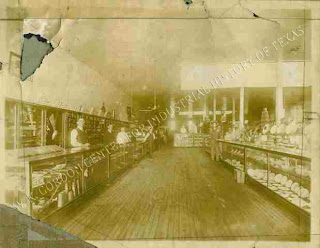The History of Thurber in 12 Objects: Artifact 1

by Shae Adams
“This meant that the miners were away from home twelve hours and fifteen minutes every day they worked, and gave rise to a complaint that the only opportunity a miner had to see his children was on Sunday, as they were engaged in peaceful slumber when he left for work in the morning and were packed off to bed when he returned from work at night. Yes, the lowly and humble miners love their children just as other people do.”

Lorenz Collection, W. K. Gordon Center
I ran across this quote a few weeks ago while researching for an upcoming exhibit. It comes from a draft of Mary Jane Gentry’s thesis about the history of Thurber. Through all my research that day, that last sentence stuck with me. So often as we study history, we forget that the people of the past had lives as colorful, heartbreaking, exciting, boring, and complex as our own. We forget that they tucked their children in at night, made jokes with co-workers, fell in love, felt hopeless, and experienced personal victories, just as we do today.
This year, the Industrious Historian blog will do more to promote the human stories that unfolded in Thurber. Each month, we will explore the history of one object from our collection, delving into the ways it fit into the complicated lives of Thurberites to help us find connections between the people of the past and ourselves.
Our first object is one of my personal favorites. Those of you who follow us on social media should recognize Clay, our Thurber brickyard bunny. This artifact helps us show off the museum, our events, and other artifacts. But today, I’m most interested in this bunny’s origin story.

Gordon Center Collection
During times of slow work in the 1930s, Thurber brick workers used excess clay and a candy mold to create small rabbits. Each rabbit is subtly different; one is squat with a round face, another has narrower, taller ears, and the front paws vary in size. I love thinking about that moment of creation: brickyard workers with hands rough and calloused from years of hard labor, gently shaping clay into something new. I wonder if they took the final products to their children, if those children showed it off to their classmates on the playground. Were there tears when one of the new toys broke or got lost?
Of course, we don’t currently have documentation on this part of Thurber life. No one wrote about something so minor in the Thurber Tiny Journal. It most certainly didn’t make national headlines. Nonetheless, these bunnies stand as a reminder of the very human, very relatable lives of those who worked in the brick plant. They weren’t just single-minded laborers. They were fathers, brothers, cousins, nephews, friends, enemies, and acquaintances. They were people who laughed, cried, and loved, just as we do today.
Stay tuned each month for a new artifact, a new story, and a new look at the people who called Thurber home.





